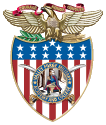Copyright Law
The May H. Baker Memorial Library adheres to the copyright law of the United States (Title 17, United States Code) which governs the making of photocopies or other reproductions of copyrighted material.
Under certain conditions specified in the law, libraries and archives are authorized to furnish a photocopy or other reproduction.
One of these specified conditions is that the photocopy or reproduction is not to be “used for any purpose other than private study, scholarship, or research.”
If a user makes a request for, or later uses, a photocopy or reproduction for purposes in excess of “fair use,” that user may be liable for copyright infringement.
Determining Fair Use
The Copyright Act of 1976, Section 107 created standards for conditions that constitute “Fair Use” notwithstanding the provisions of sections 106 and 106A, the fair use of a copyrighted work, including such reproduction in copies or phonorecords or by any other mean specified in that section, for purposes such as criticism, comment, news reporting, teaching (including multiple copies for classroom use), scholarship, or research, is not an infringement of copyright.
In determining whether the use made of a work in any particular case is a fair use the factors to be considered shall include:
- the purpose and character of the use, including whether such use is of a commercial nature or is for nonprofit educational purpose
A word of caution: several courts have held that absence of financial gain is insufficient for finding of fair use.
- the nature of the copyrighted work (especially whether creative or informational)
Photocopies of a newspaper article are more apt to be considered “fair use” than photocopies of a short story or poem.
- the amount and sustainbility of the portion used in relation to the copyrighted work as a whole
The smaller the portion, the more likely it is to be “fair use.”
- the effect of the use upon the potential market for or value of the copyrighted work
Probably the most important: if the reproduction of a copyrighted work reduces the copyright holder’s potential for sales and profit, the use is unlikely to be “fair use.”
Classroom Copying Guidelines
A single copy may be made by a faculty member for his or her scholarly research or for use in teaching:
- a chapter from a book
- an article from a newspaper or periodical
- a short story, short essay, or short poem, whether or not from a collective work
- a chart, group, diagram, drawing, cartoon, or picture from a book, periodical, or newspaper
For Additional Information on Copyright
- United States Copyright Office
- Stanford University Library: Copyright and Fair Use
- When Works Pass Into the Public Domain
- Campus Guide to Copyright Compliance
- CONFU: The Conference on Fair Use
- Copyright Clearance Center
- Copyright Decision Map
- Electronic Frontier Foundation
- University of Minnesota Copyright Information & Education
- Copyright Tutorial
